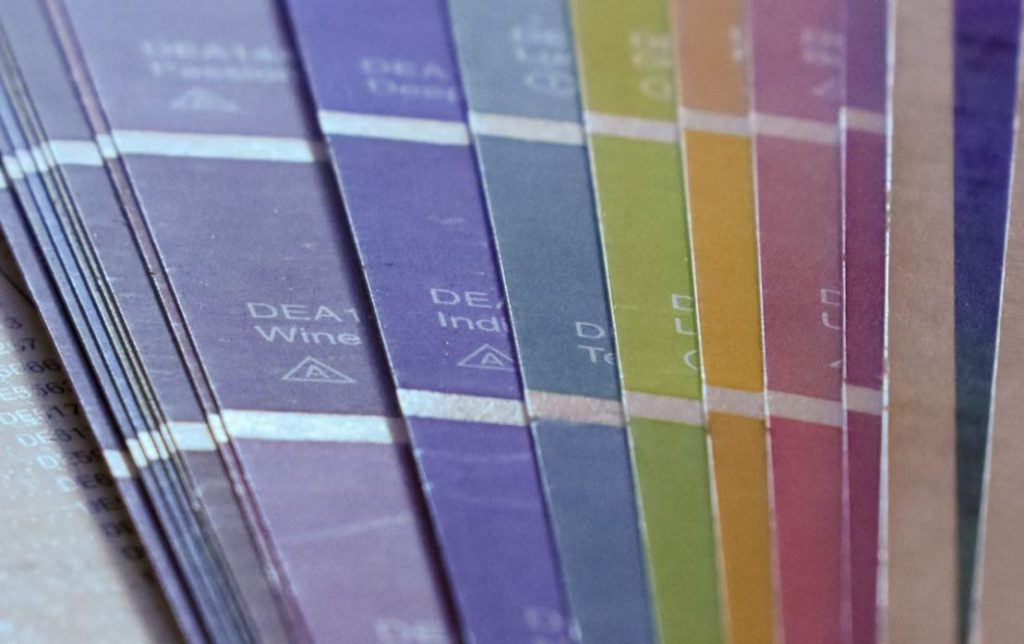Giving your home a fresh coat of paint can dramatically transform its appearance and create a welcoming atmosphere. Whether tackling the project yourself or hiring professionals, having some interior painting tips up your sleeve can significantly affect the outcome.
However, from choosing the right colors to prepping the surfaces and applying the paint, each step requires careful attention to detail. This article will provide seven valuable interior painting tips for your home.
1. Prepare Your Room
Setting up your space correctly is essential before beginning any interior painting projects. To start, center the furniture or cover it with drop cloths to prevent paint splashes. Take down any pictures, outlet covers, or switch plates on the wall.
For better paint adhesion, clean the walls to eliminate dust and grease. If there are holes or cracks, you can fill them with spackle and sand the surface to make it smooth. Also, do not forget to use painter’s tape to protect edges and trim.
Taking these steps ensures a clean canvas for your paint and makes the entire painting process more efficient.
2. Choose the Right Paint
When painting an interior, choosing the right paint is very important. That being said, consider factors like the room’s purpose, lighting, and your personal preferences. For high-traffic areas, opt for durable and washable paint finishes like satin or semi-gloss. When you want a softer look but do not want it to be as easy to clean, matte finishes are great.
Likewise, use paint samples to test colors on a small wall section before committing to a full coat. By doing this, you can see how the color looks in a different light.
Also, pay attention to the type of paint, whether it’s latex or oil-based, and choose accordingly based on the surface you’re painting. Choosing the right paint ensures a successful and long-lasting interior paint job aligning with your space vision.
3. Calculate Paint Quantity
Before starting your interior painting project, it’s essential to calculate the amount of paint needed. To do that, measure the height and width of each wall you plan to paint, then multiply these dimensions to find the total square footage. Subtract the space occupied by windows and doors from this total.
Most paint cans provide coverage information, so divide the total square footage by the coverage per gallon to determine the quantity of paint needed. Having the right amount of paint ensures you won’t run out midway through the project and can keep a consistent color across all walls.
4. Use High-Quality Painting Tools
Quality brushes, rollers, and painter’s tape make a smoother and more professional finish. For instance, a good brush helps with precision, especially in corners and edges, while high-quality rollers ensure an even application of paint on larger surfaces. At the same time, painter’s tape helps create crisp lines and protects areas you don’t want to paint.
Aside from that, quality tools make the painting process more efficient and enjoyable, reducing the likelihood of frustrating issues like streaks or uneven coverage. While good tools may cost a bit more, they pay off in the form of a polished and well-executed paint job.
5. Have Proper Surface Preparation
Properly preparing the surfaces before painting is crucial in achieving a flawless finish. To do that, clean the walls to remove dirt, grease, or dust. Repair any cracks or holes with spackle and sand the surfaces for smoothness.
If there are glossy or heavily textured surfaces, consider using a primer to ensure better paint adhesion. Proper surface preparation sets the foundation for a successful paint job and enhances the longevity of the paint.
6. Consider Wall Accents
Wall accents can be a different color, pattern, or texture than the main walls, creating focal points in the room. This could be an accent wall, where one wall is painted in a distinct color, or stencils, wallpaper, or even a textured finish.
Keep in mind that adding wall accents enhances the overall aesthetics of your space and allows you to express your creativity. Consider the room’s purpose and style when deciding on wall accents, ensuring they complement the overall design.
7. Final Touches and Clean-Up
As you near the completion of your interior painting project, pay attention to the final touches and clean-up. That being said, carefully remove the painter’s tape from the edges and trim while the paint is still slightly damp to achieve clean lines. Check for any touch-ups needed and address them promptly.
When done, clean your painting tools thoroughly, including brushes and rollers, to ensure they remain in good condition for future use. Wipe down any surfaces with paint splatters or drips, using appropriate cleaning agents for your paint type.
Taking the time to complete these last steps ensures that your newly painted interior not only looks fantastic but is also ready for you to enjoy.
Approach Home Painting Projects with Confidence and Creativity
As you venture into interior painting for your home, armed with these essential tips, approach your projects confidently and creatively. By preparing your space meticulously, choosing quality paints, and mastering proper techniques, you’ll transform your interiors with finesse.
Remember, your allies are the right tools, efficient planners, and attentive to detail. For a seamless and stress-free painting experience, consider exploring the professional services offered at https://www.onedaypaint.com.au/. Your home deserves the best, so let your painting endeavors reflect your unique style and make every brushstroke count.



